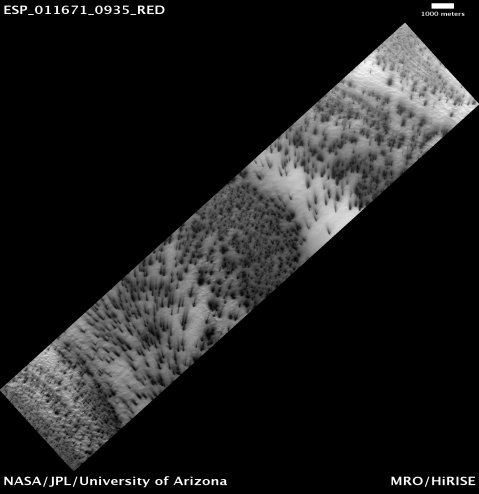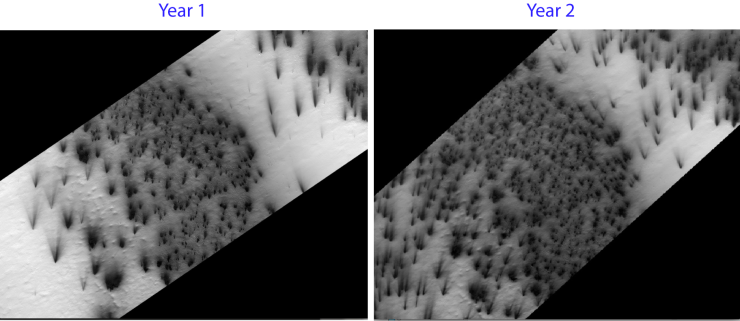Brand New Images – Year 1 Data
Today we have a post by Dr. Candice (Candy) Hansen, principal investigator (PI) of Planet Four. Dr. Hansen also serves as the Deputy Principal Investigator for HiRISE (the camera providing the images of spiders, fans, and blotches seen on the site). She is also a Co-Investigator on the Ultraviolet Imaging Spectrograph on the Cassini spacecraft in orbit around Saturn. Additionally she is a member of the science team for the Juno mission to Jupiter. Dr. Hansen is responsible for the development and operation of JunoCam, an outreach camera that will involve the public in planning images of Jupiter.
Wow – I just checked Planet Four and found that we had passed 70,000 participants; 70,334 to be exact, as of today. Thank you all for your many hours of hard work (and fun!).
To keep our most dedicated folks going we’ve added the first year of Mars Reconnaissance Orbiter operation (Year 1) to the image collection, although we are not quite finished with Year 2 and Year 3. We started with Year 2 and Year 3 mainly because we were much better at picking good locations and configuring the camera properly. Year 1 is a little more challenging, but interestingly the spring was also rather different from that of the subsequent years. Just like on Earth in some years we have more severe winter storms than others.

Region dubbed Manhattan thawing in Year 1 – You can find more about the observation at http://hirise.lpl.arizona.edu/PSP_002876_0935

Manhattan defrosting in Year 2. Many more fans than appear in Year 1. You can find more about the observation at http://hirise.lpl.arizona.edu/ESP_012739_0935
In this case it appears that there was more frost and ice in Year 1 than Year 2 or 3, but it could also be that it just warmed up earlier in the latter years. So give it your best effort because I think the results will be fascinating.
In the meantime we are busy with our part of the task – digesting all of your measurements and figuring out what they are telling us about Mars. Sometimes I feel like we aren’t holding up our end of the bargain, but then again there are just four of us, and over 70,000 of you!
As you can see from Meg’s post, NASA HQ has taken notice of this effort. I reported on the Planet Four experience at our last HiRISE team meeting and a number of my colleagues were excited about other potential citizen science projects. Go Zooniverse!
Help us understand how Year 1’s weather and climate differs from Year 2 and Year 3 by mapping the fans and blotches on the new never-before-seen images on Planet Four today.


Trackbacks / Pingbacks